Monstera are a truly iconic plant.
These days, nothing screams ‘Plant Person’ like a 10-foot Monstera plant in the living room (bonus points if it’s variegated!).
Of course, it can be tricky to get your hands on the latest hot species doing the rounds on IG, but thankfully, there’s a variety of Monstera species that can fit all of our needs.
Whether you need a compact terrarium species or a real showstopper – there’s something here for you.
Ready?
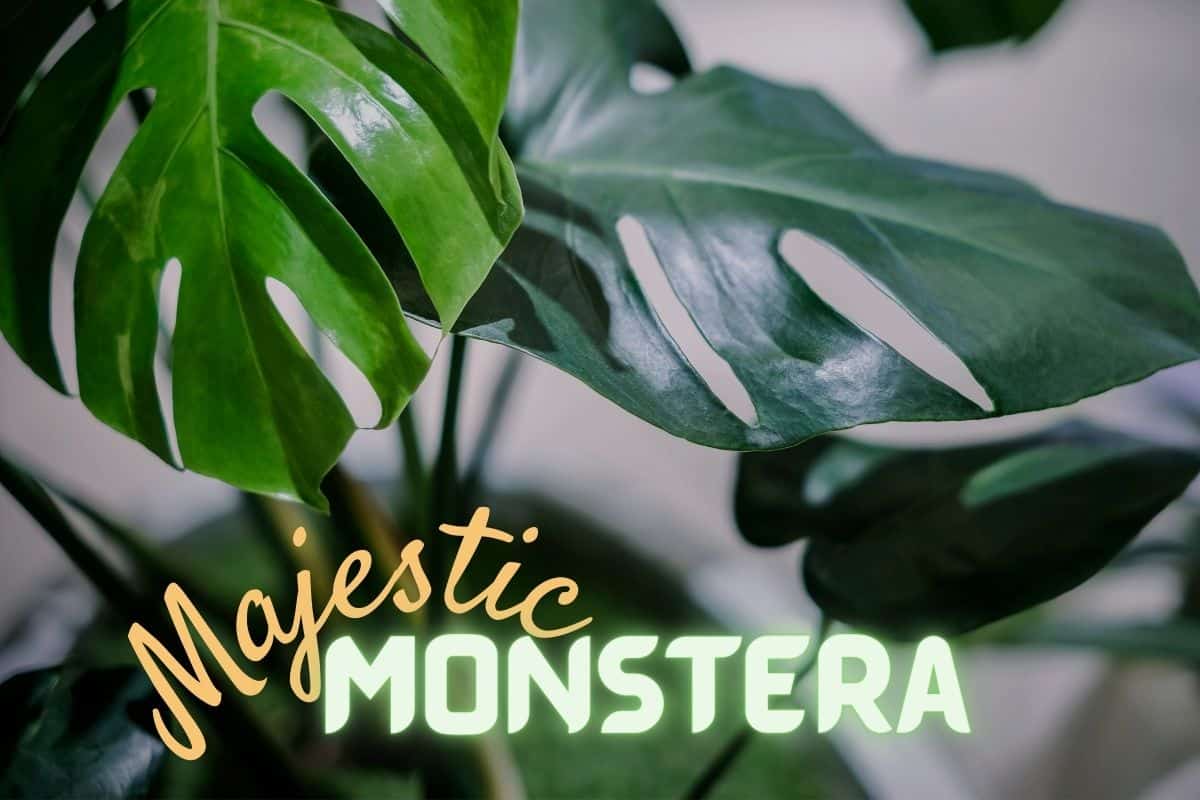
Terrarium Tribe is reader-supported. When you purchase through links on our site, we may earn an affiliate commission (at no further cost to you). 💜
Types of Monstera
Before we begin, there are a few important things to understand about Monstera.
- First, it’s a genus of plants that are often misidentified and named in super convoluted ways. So, in this list, we’ll be sticking with the key species and listing all their varieties, cultivars, and synonyms underneath.
- Second, Monstera presents a wide spectrum of what’s called “fenestration,” depending on the species. This refers to the kind of holes/splits that the leaves show.
- Third, a lot of these plants have some serious transformations as they mature. It’s not uncommon for small vines to turn into full foliage monsters!
You’ll see what I mean…
#1 Monstera deliciosa (Swiss Cheese Plant)
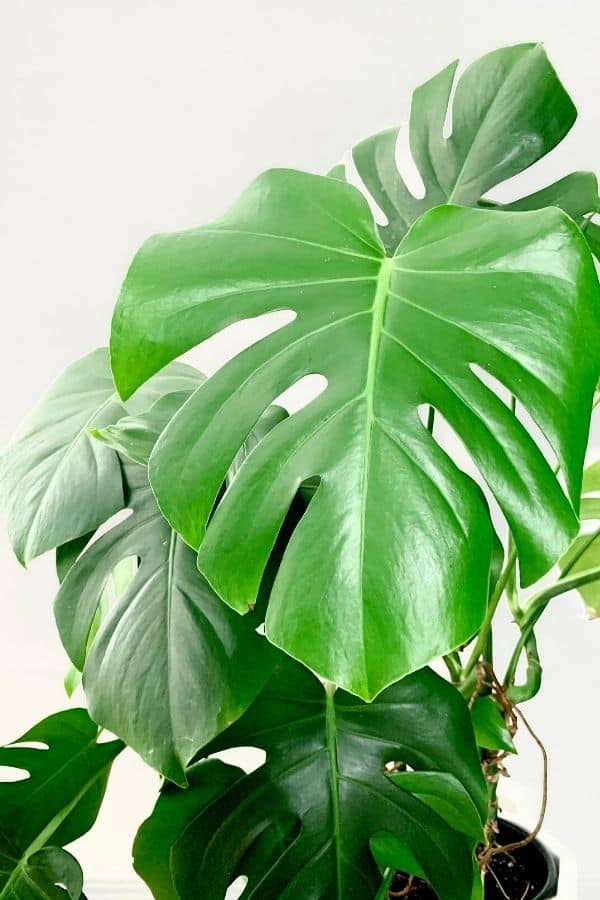
Monstera deliciosa is the true classic, the Godfather if you will.
Boasting large, heart-shaped leaves with fully split leaves, it can dominate a space with its majesty.
When browsing for this plant online, you’ll also likely come across the names Monstera borsigiana and Monstera pertusum. Apparently, both are still just Monstera deliciosa (as if this isn’t confusing enough, right?).
👉 Shop Monstera deliciosa on Etsy.
It’s also one of the few species that has variegated forms, and so many of those coveted creamy white varieties are from Monstera deliciosa (or they’re sometimes commonly known as Monstera variagata – presumably for ease).
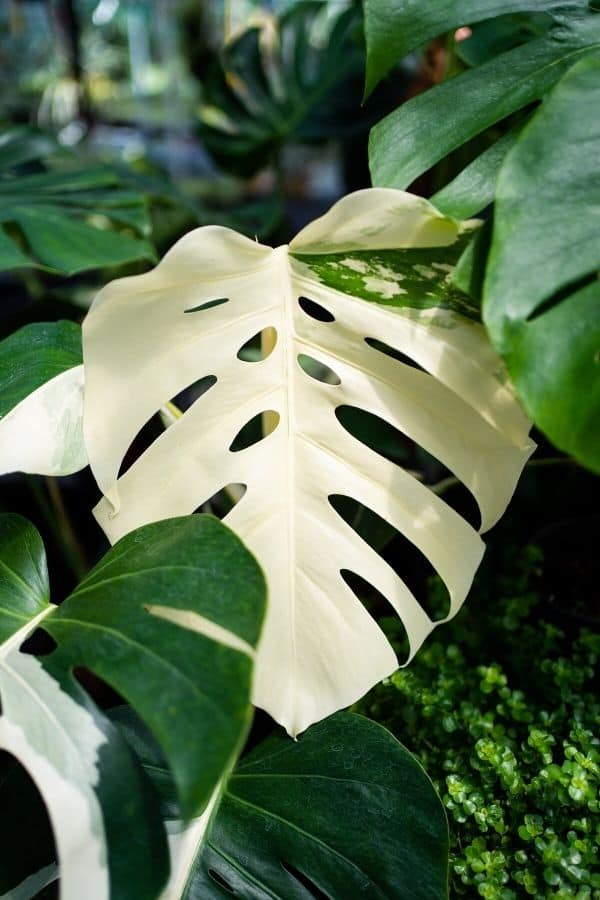
👉 Shop Monstera deliciosa ‘Albo Variegata’ on Etsy.
#2 Monstera adansonii (Swiss Cheese Vine)
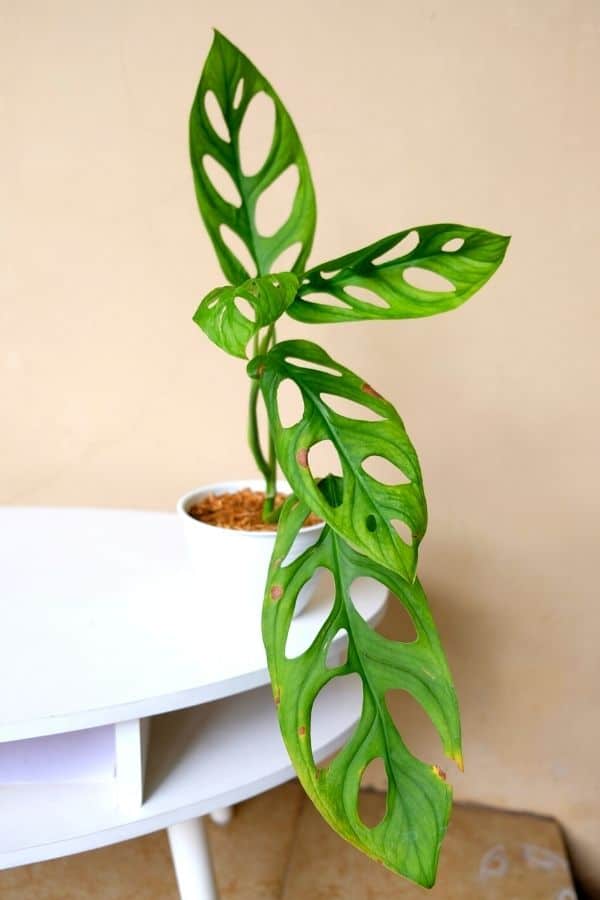
As you might have guessed from the common name, the Swiss Cheese Vine is much like the Swiss Cheese Plant, but it’s much smaller and… it’s a vine.
Also, its fenestration expresses more as holes than fully split leaves.
Growing up to 20 feet in the wild, Monstera adansonii is great for climbing up moss poles (or terrariums if you’re prepared to trim regularly!)
👉 See Monstera adansonii on Etsy.
Also commonly referred to as Monstera friedrichsthalii, these easy-growing plants are a good starting point for new plant parents.
Also, like its larger cousin, Monstera adansonii also comes in variegated forms.
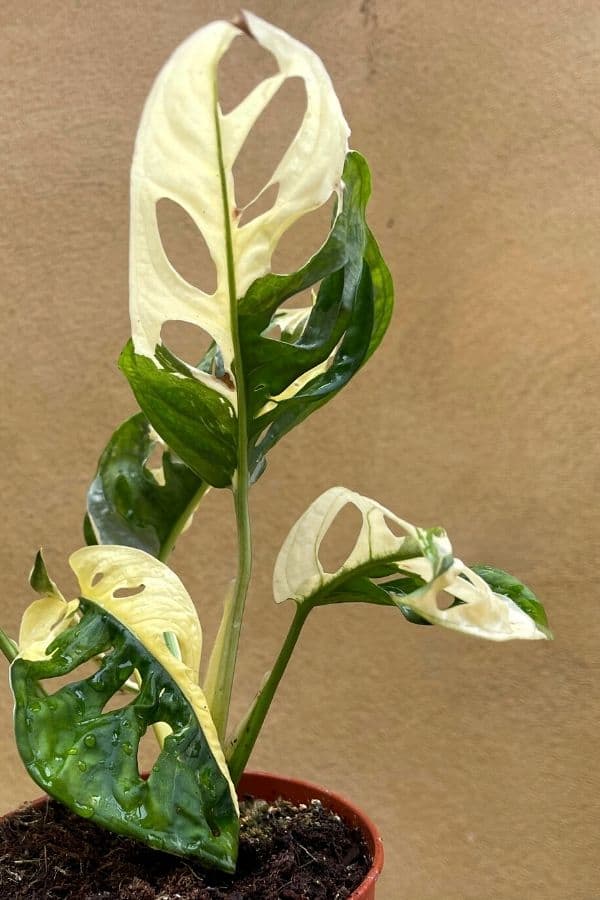
👉 Shop Monstera adonsonii ‘Variegata’ on Etsy.
#3 Monstera obliqua
On the much smaller (and much more expensive) end of the spectrum, Monstera obliqua somehow gets a lot more hole in a lot less plant…
Similar to the Swiss Cheese Vine in appearance, it has very pronounced fenestrations. To the point where it’s like 90% empty space.
A very cool (and fragile) looking plant!
If you do manage to get your hands on this rare species, they make a great terrarium plant due to their compact size and high humidity requirements. Just make sure it’s legit…
👉 Shop Monstera obliqua on Etsy.
#4 Monstera siltepecana (Silver Monstera)
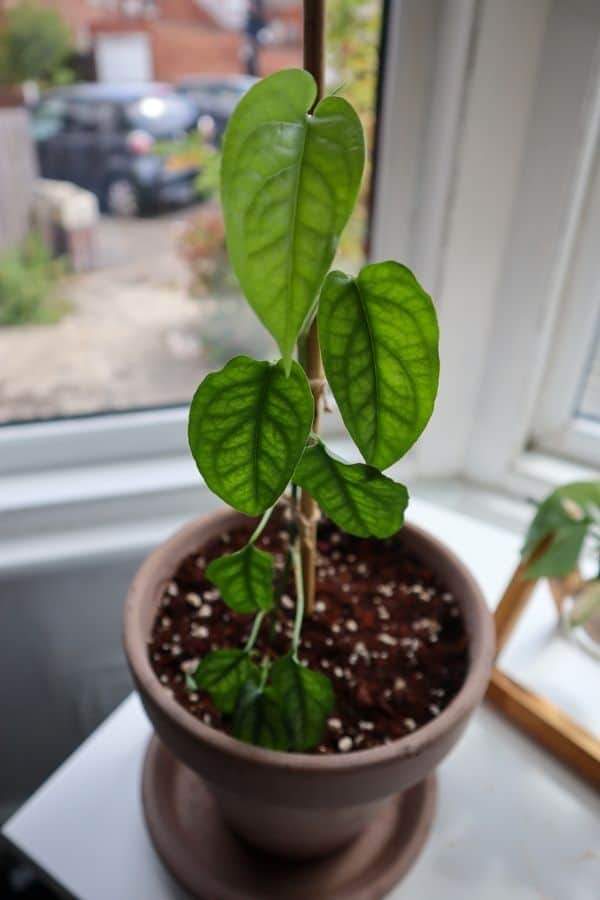
This silvery beauty is a Monstera disguised as a full-leafed vine.
With a gorgeous metallic sheen on the leaves, it’s a chic choice for the home.
In its juvenile form, it looks a lot like a Philodendron (and certainly climbs like one), but once Monstera siltepecana has fully matured, it will eventually develop holes in the leaf towards the center and mostly lose the coloring.
However, the curious thing about this plant is that it matures from a terrestrial plant to an epiphyte. So, unless you can facilitate this (odd) growth cycle, you’re unlikely to ever see those fenestrations develop.
It’s still stunning, though!
👉 Shop Monstera siltepecana on Etsy.
#5 Monstera pinnatipartita
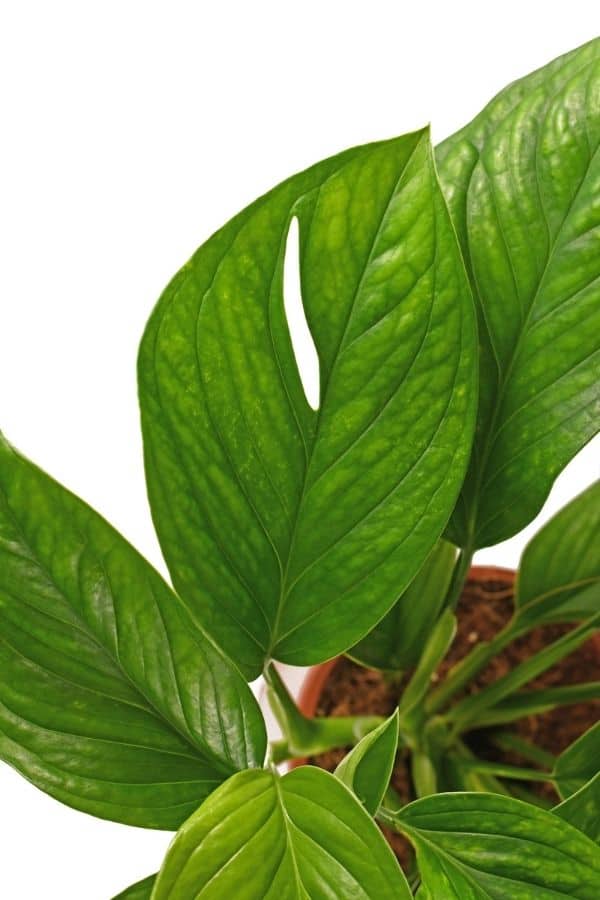
Much like the last plant in this list, Monstera pinnatipartita is a species that is almost unrecognizable as it grows from its juvenile to mature form.
Starting life as a humble climbing vine, it transforms into stunning broad split-leaved foliage much like M. deliciosa. Though, somehow, it still gives me palm vibes, too.
As long as you’re able to accommodate its varying needs, Monstera pinnatipartita is a stunning choice!
👉 Shop Monstera pinnatipartita on Etsy.
#6 Monstera karstenianum (Monstera Peru)
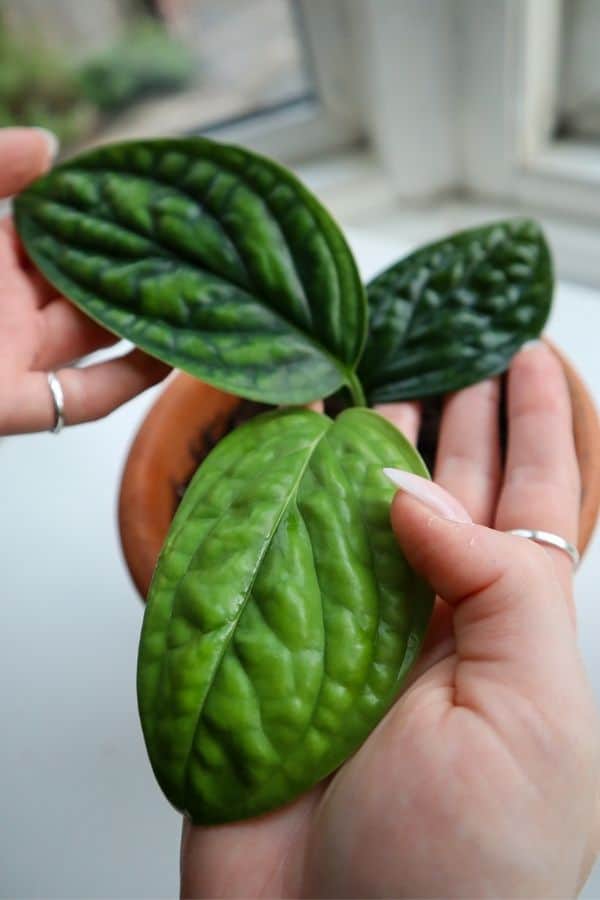
One of these is not like the others…
Monstera Peru is a species that does not develop fenestrations at all.
So, if you’re after that signature holey Monstera look, this particular species might not be for you. That being said, it’s a very interesting plant nonetheless.
With glossy lance-shaped leaves, it’s a wonderful vine species.
👉 Shop Monstera karstenianum on Etsy.
#7 Monstera dubia
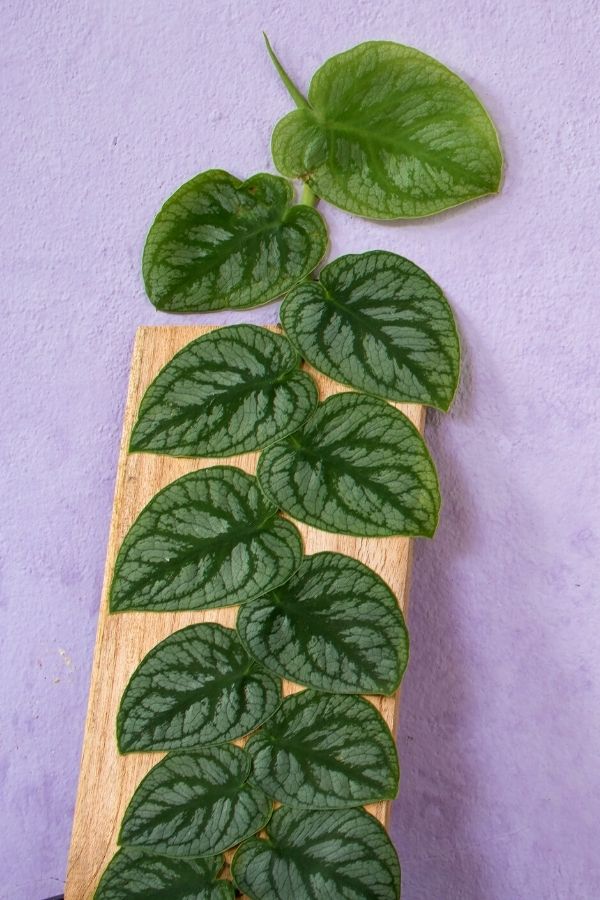
This fascinating plant starts as a pretty little shingling vine.
Its full silvery leaves (not unlike M. siltepecana) lie flat against the surface that it’s climbing in an alternating fashion. Great for setting against a board or terrarium background.
Where this thing goes completely bonkers is when it’s fully matured. The unassuming little leaves somehow transform into broad, split-leaved foliage.
There are photos online of absolute monster (no pun intended…) vines on trees in the wild, with dozens of these enormous leaves.
👉 Shop Monstera dubia on Etsy.
#8 Monstera acuminata
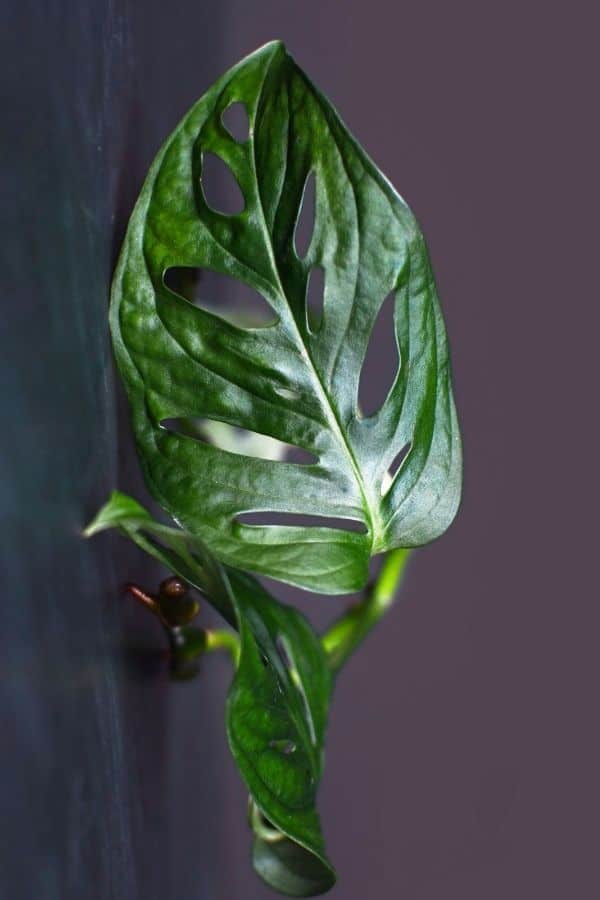
I like to think of Monstera acuminata as the smaller cousin of Monstera adansonii.
They’re honestly quite difficult to tell apart (especially in their juvenile forms) as they both form lovely heart-shaped split leaves, but you’ll typically find those of M. acuminata to be on the smaller side.
People also report that they’re smoother to the touch, so you might be better off finding these in person if you’re unsure!
Being such a compact species of Monstera, it’s a great choice for terrariums, but it’ll still do best when given something to climb – so a piece of driftwood or textured background can really help.
👉 Shop Monstera acuminata on Etsy.
#9 Monstera esqueleto (formerly Monstera epipremnoides)
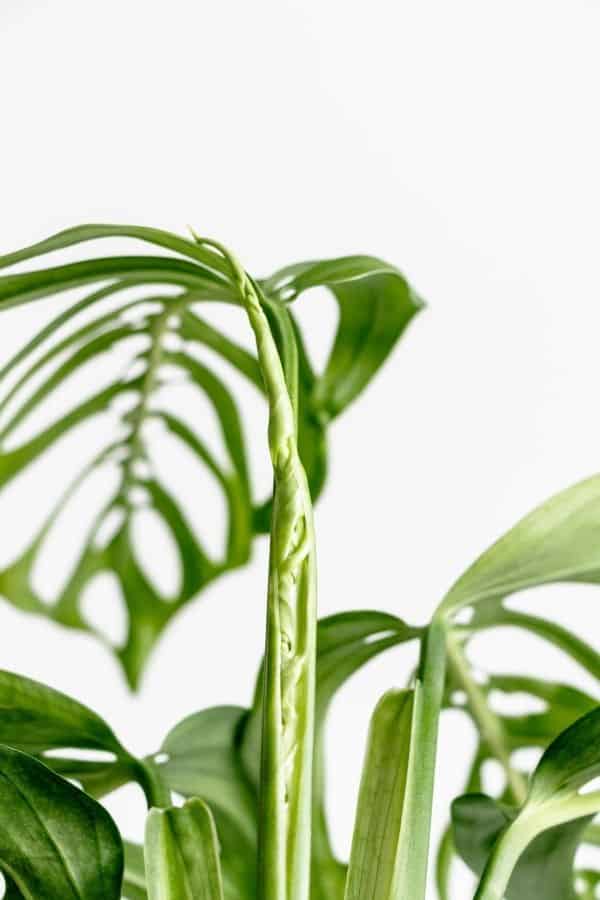
Yet another Monstera species that undergoes a crazy transformation as it matures.
This rare species also resembles a Monstera adansoni in its juvenile form, but its leaves will perforate so much more when it grows.
Seriously, when it’s mature, it’s almost getting up to M. obliqua levels of holeyness (sp?) but without looking quite as fragile. It’ll also get much bigger, so this plant is really exciting to see grow!
👉 Shop Monstera esqueleto on Etsy.
#10 Monstera standleyana
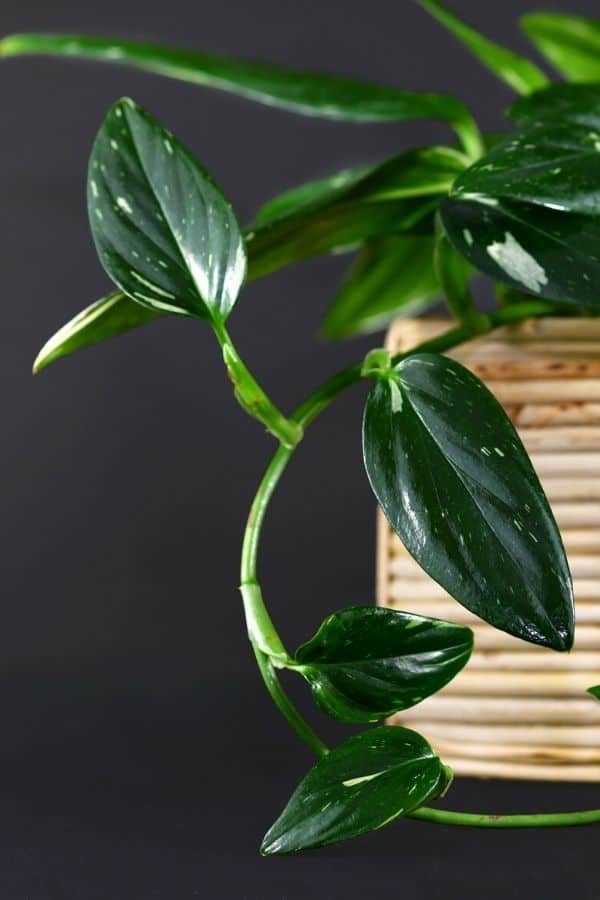
Monstera standleyana is another species in the genus that doesn’t form fenestrations.
I’ve seen some larger examples of this species online, and they don’t appear to transform much as they grow/mature. So I think this one doesn’t ever form holes/split leaves.
Instead, they form gorgeous lance-shaped leaves (often with speckled white variegation), and they can be grown on moss poles to form a very full-looking foliage.
With the waxy sheen and sharp(ish) foliage that fully wraps around the center, they kind of remind me of a Rubber Plant.
Monstera standleyana is also often called the Philodendron ‘Cobra,’ so that may get a little confusing if you’re looking to purchase this plant. Personally, it does strike me more as a Philodendron, but I believe the Monstera classification is the right one.
👉 Shop Monstera standleyana on Etsy.
#11 Monstera subpinnata
Another species on the rarer side, Monstera subpinnata, takes the split-leaf fenestration to the next level with beautifully fanned-out foliage.
It’s similar to M. pinnatipartita, but it really takes the palm vibes to the extreme with such wide leaf separation. It’s absolutely stunning.
If you’re going for a tropical look at home, this is a great choice (if you can find it).
👉 Shop Monstera subpinnata on Etsy.
#Bonus – ‘Mini Monstera’

Last but by no means least is the popular phony Monstera, Rhaphidophora tetrasperma (otherwise known as the ‘Mini Monstera’).
So, I know it may not be a true Monstera, but this thing is a great little plant that bears a lot of resemblance to the broader split-leaved foliage of Monstera deliciosa – just way smaller.
I have one of these beauties as a houseplant, but it’ll do great in a larger terrarium, too. It has a much stronger vining nature than its Monstera counterpart, so be sure to give it something to grow up.
👉 Shop ‘Mini Monstera’ on Etsy.
Over to You
What species are you most excited to see from the list? (Personally, I’m torn between Monstera pinnatipartita and Monstera esqueleto).
Or have I missed your favorite? The houseplant market trends change so quickly, there’s always new stuff coming through.
Let me know in the comments.
Or, for more inspiration, why not check out our Guide to Terrarium Vines?

That are some good explanation for newbies like me. What about Monstera lechleriana? Any different from M. Adansoni?
Glad to hear you found it useful! Monstera lechleriana is a lot less common but probably still deserves a spot on this list. As far as I can tell they’re very similar to Monstera adansonii, with lechleriana having much larger leaves and more central fenestrations (though I’ve never seen one in person sadly).
Great article! I found a couple babies to add to my wishlist (hello standleyana) and also solved the mystery of a plant gifted to me as a monstera that clearly isn’t one–its a Rhaphidophora! I’ll definitely keep an eye out for more plant knowledge from you.